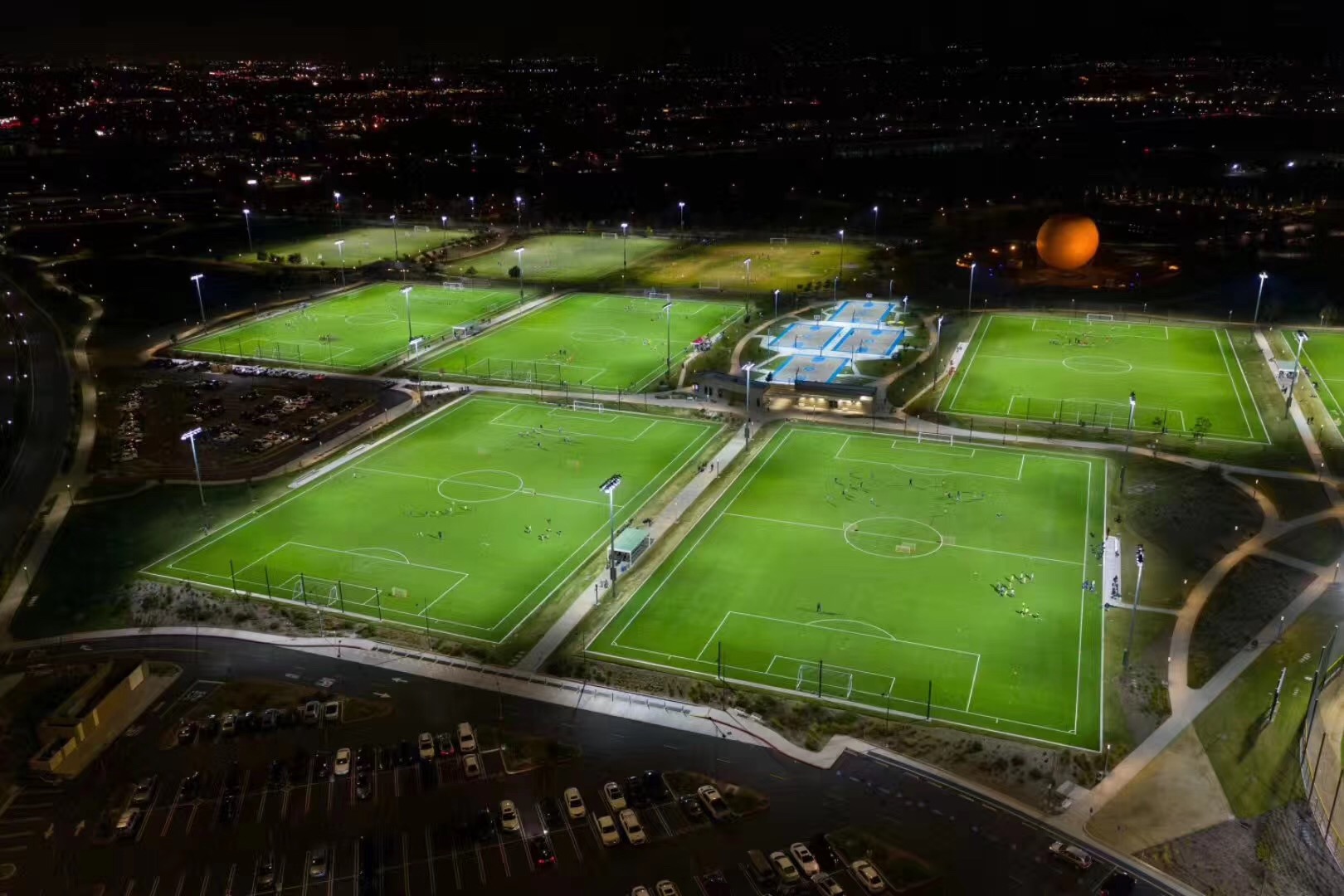The modern stadium not only absorbs the latest development of contemporary architectural art and the essence of local human history in the architectural appearance, but also shapes the stadium architecture in line with the contemporary spirit, and all kinds of sports software and hardware facilities must be complete, of course, there must be a good lighting environment.

Lighting relies on the function of light to reasonably illuminate and act on the vision of athletes, referees and spectators. To enable athletes to focus on the full performance of their competition level and create good results; So that the referee can quickly make an accurate judgment; So that the audience can easily enjoy the athletes’ technical movements, feel the intense and lively competitive atmosphere on the field; Make the color TV broadcast picture clear and vivid. Therefore, a good lighting environment plays an important role in the modern stadium, so the stadium lighting construction must master the following three principles:
(1) Meet the visual requirements of athletes during the game, so that the objective impact of lighting on the game is minimized;
(2) To meet the visual requirements of the audience, so that the discomfort caused by lighting when watching the game is minimized;
(3) Meet the lighting requirements of color TV broadcasting and improve the quality of broadcasting. 1. Sports venue lighting design standards
Comprehensive stadium competition projects are mainly track and field, football, etc., the main lighting design standards are:
(1) Guidelines for artificial lighting of football stadiums: FIFA. The standard includes competition classification, lighting requirements, recommended values of lighting parameters, field lighting measurement and other contents, and is the most complete and latest standard in the field of artificial lighting at present. This standard was applied at the 2002 Korea-Japan World Cup.
(2) Multi-functional indoor stadium artificial lighting guidelines: International Sports Federation (GAISF), European Broadcasting Union (EBU). For the first time, the standard introduced high definition color television transmission (HDTV) provisions, and the lighting standard was further improved. However, HDTV is still in the development stage, so the requirements are based on the knowledge and experience available at the time the standards were developed; Compared with other standards and specifications, HDTV also requires an emergency system to provide minimal emergency TV lighting.
(3) Lighting Guidelines for sports events with color television broadcast and film systems: CIE Document 83.
The CIE83 technical document focuses on the lighting requirements of color television photography, and also explains the differences between the requirements of television photography and film photography.
(4) Guidelines for the determination of luminosity requirements for sports lighting devices: International Commission on Lighting (CIE) Document 67. In 1986, the CIE4.4 Committee of the International Lighting Commission developed the technical document CIE67. The purpose of this report is to develop standard procedures for the calculation, measurement and reporting of lighting characteristics of indoor and outdoor sports lighting installations.
(5) Football Stadium lighting: International Commission on Lighting (CIE) Document 57. In 983, the International Lighting Committee officially promulgated the Football stadium lighting standard (Lighting for footbal1), that is, the CIE57 technical document. The standard is a guidance document for flood lighting in football fields and applies from training grounds to stadiums with stands.
(6) Civil building lighting design standard: GBJ133-90. It will come into force on January 1, 2004.
(7) Electrical design code for civil buildings: JGJ/T16-92. It came into force on 1 August 1993.
(8) Sports building design code: JGJ31-2003J265-2003). This code is the industry standard jointly issued by the Montde Ministry and the General Administration of Sport of China, and has been implemented since January 1, 2003. This standard is the first professional standard for sports construction in China.
Which of the above standards is used for venue lighting depends on the positioning of the functional needs of the site by the builder, that is, the nature and level requirements of the competition. The International Sports Federation (GAISF) classifies the game according to whether it is professional or amateur, while FIFA classifies it according to whether it is televised. Generally speaking, the standards set by international sports organizations are higher than and smaller than China’s national and industry standards, therefore, the construction of sports venues is simply used for domestic competitions and training, which can be based on the above (6), (7), (8) standards, and other standards are supplemented. If it is used as an intercontinental or international competition venue, it must be designed in accordance with the principle of (1) ~ (5) standards as the main and other as the auxiliary. The core content of lighting standards is illuminance standards and lighting quality standards, lighting quality standards include glare, light source color temperature,

